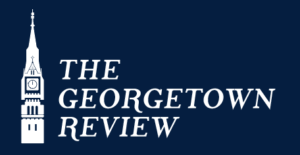![]()
At NATO’s founding in 1949, world leaders conceived of the alliance as a containment mechanism to stem Soviet expansion. In subsequent decades, NATO itself has moved towards Russian borders, posing a converse threat to Moscow.
The alliance has expanded from its original 12 member countries, including the United States, the United Kingdom, France and Portugal, to include 31 member states as of July 2023. The “open door” policy, based on Article 10 of NATO’s founding Washington Treaty, allows any “European State in a position to further the principles of this Treaty and to contribute to the security of the North Atlantic area” to enter the treaty. North Macedonia was the last country to join NATO, in 2020, after considerable diplomatic wrangling.
Now, NATO expansion is again at the forefront of foreign policy debate due almost exclusively to Russian aggression in Ukraine. Finland entered NATO in April 2023, and Sweden is expected to join the alliance later this year. Ukraine is now at the top of the agenda, dominating discussion at the NATO summit in Vilnius, Lithuania on July 11 and 12.
In the wake of the Russian invasion of Ukraine in 2022, Finland and Sweden declared their intention to join NATO, and have since been following the accession process. Finland is now an official ally, having entered NATO in Apr. 2023. Although Sweden declared its intention to join at the same time as Finland, its process was delayed by NATO’s requirement for unanimous consensus.
Turkish President Recep Tayyip Erdoğan delayed the process by insisting Sweden meet certain “security demands,” particularly with regard to Turkish-Kurdish activists residing in Sweden. However, in the last week, Erdogan has changed his stance on Sweden and assented to its membership in exchange for greater cooperation from European Union leaders in discussions of Turkey’s acceptance to that organization.
Sweden and Finland’s acceptance into NATO strengthens the alliance’s position in the Baltic and shows it advancing closer to Russia, flying in the face of Moscow’s wishes. Reinforcing NATO’s foothold in the Baltic also extends a hard line for Moscow–if Vladimir Putin was to expand his land grab towards the Baltic, he would now stand a higher chance of entering a war with all NATO allies, who are treaty-obligated to mutual defense.
The question of Ukraine’s accession is fundamentally different from the Finland and Sweden proposals. Ukraine has sought NATO membership for over a decade, but it poses a difficult balancing act for NATO member states.
Before the war, there may have been hesitance to allow Ukraine NATO membership due to the prospect of angering Russia, but today there is extreme caution regarding Ukraine’s membership while it is engaged in an active war. Were Ukraine to join NATO at this juncture, ally states would be obligated to enter the war with Russia, an outcome which Western leaders, as well as President Zelenskyy, understand to be implausible.
Any explicit action in the direction of Ukraine’s membership runs the risk of antagonizing Moscow, creating a dangerous security situation and potentially entailing a military and financial commitment which Western leaders are not prepared to make.
In 2008, at the Bucharest Summit, NATO leaders promised that Ukraine and Georgia would one day enter the alliance, in part to protect them from Russian aggression. Although President Zelenskyy understands that Ukraine cannot achieve NATO membership for the duration of the war, he went to Vilnius hoping for an explicit timeline of when Ukraine could expect to join the alliance. He believes this will create an incentive for Moscow to back down in the war, allowing Ukraine to retake territory
However, parts of both Georgia and Ukraine are now under Russian occupation, remain outside of the alliance, so the promises of Bucharest appear somewhat hollow. They prove the assurance of future NATO membership is not the strong signal to Putin that leaders might have hoped to present.
President Biden and other leaders have voiced concerns over allowing Ukraine to join now, and have demonstrated hesitance to give a specific timeline. Their caution manifested in the results of the Vilnius meetings, published in the Vilnius Declaration, which re-emphasized Western financial and material support for Ukraine, upon which Ukraine’s military depends, but did not give a specific timeline for membership. The declaration also said that Ukraine was now closer than ever to NATO, announcing the establishment of a NATO-Ukraine Council, and it announced that Ukraine is no longer expected to complete the Membership Action Plan, which is generally required of prospective NATO members.
Although the NATO-Ukraine Council and promises of expedited membership are to some extent diplomatic wins for Ukraine, they represent Western leaders’ hesitation to dive too far into supporting Ukraine against Russia. Their reticence shows that they are, to some extent, concerned about goading Putin into further escalation, where he may move to expand the military conflict outside of Ukrainian borders. At the summit in Vilnius this week, Secretary General Jens Stoltenberg reinforced NATO’s commitment to broad based resource support for Ukraine, and promised membership eventually, but only “when allies agree, and when certain conditions are met.”
Ultimately, it is safer for NATO leaders to remain vague about the specifics of Ukrainian accession, though it is a disappointing outcome for President Zelenskyy. NATO leaders agree that a show of unity with Ukraine is crucial at this juncture, but the question remains as to how Putin will respond. Will increased Ukrainian involvement in NATO provoke Putin into more extreme action or convince him that the West is so united around Ukraine it would be folly to continue his war?
Ultimately, understanding the Ukraine question through the lens of whether or not it will upset Putin is too limited in scope, and does not acknowledge the greater possibility for NATO’s role in Europe. When the war is over, it is crucial Ukraine be allowed to join NATO, and that commitments of military support from partner countries bridge the gap between peace and accession. Membership in NATO would make Ukraine an official ally of the richest nations in the world, who would then be bound by their treaty to defend it against Russia, protecting it from more Russian aggression.
One could argue any additional country in the alliance puts NATO in a weaker strategic position, exposing it to more possible conflicts which may then inform leaders’ unwillingness to admit Ukraine, given its proximity to the volatility of Moscow’s foreign policy. Do Americans really want to commit to entering a war if Estonia is invaded? Or Chechens for Canada?
A complex series of alliances is how the international community found itself in the first world war, and could reveal the same pitfall today. Any military or economic might which Ukraine could bring to the alliance would be dwarfed by the renewed risk of worldwide conflict.
Nevertheless, Ukraine’s membership in NATO will expand NATO’s influence in eastern Europe, reinforcing the rules-based international order. The presence of NATO allies in the region will counterbalance Russia’s crumbling institutions and morale, and may be the strongest hope to prevent Putin from undermining the sovereignty of other nations, further destabilizing the European balance of power. It would serve as a safeguard against a devolution into a new paradigm of international relations where any nation may violate another’s sovereignty with impunity, without a strong response from other nations.
A strong show of institutional unity in support of international norms—one that moves beyond rhetorical flourishes and promises of long-term support—will do more to curb rampant regional ambitions than appeasement has ever been able to do.












